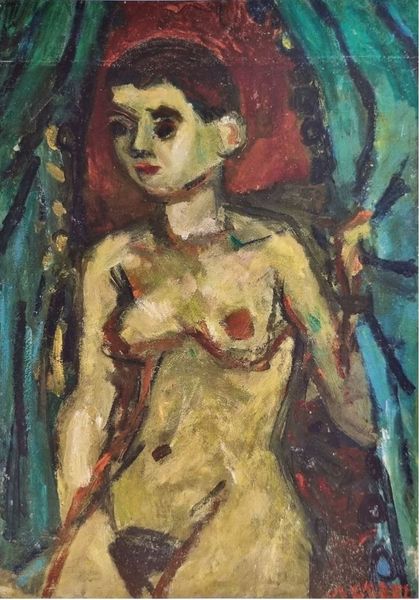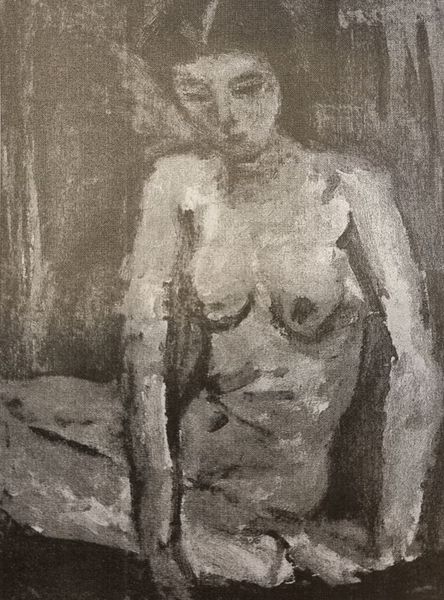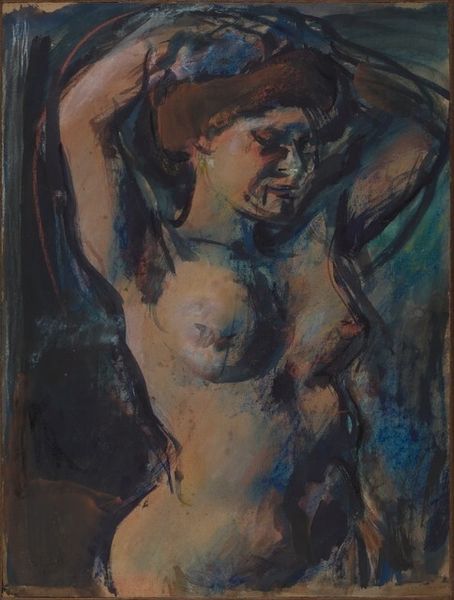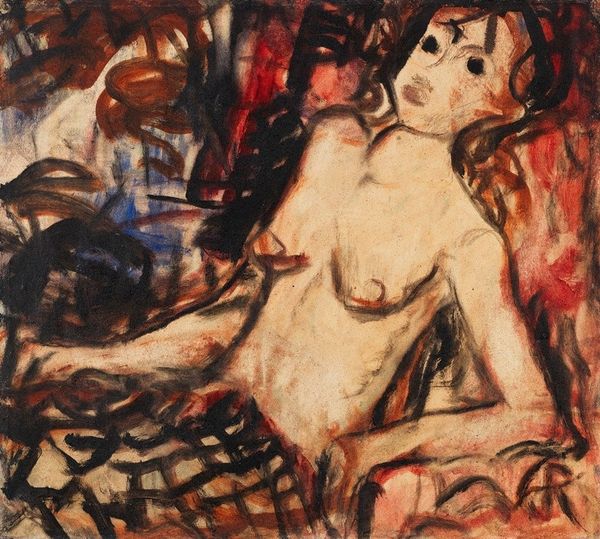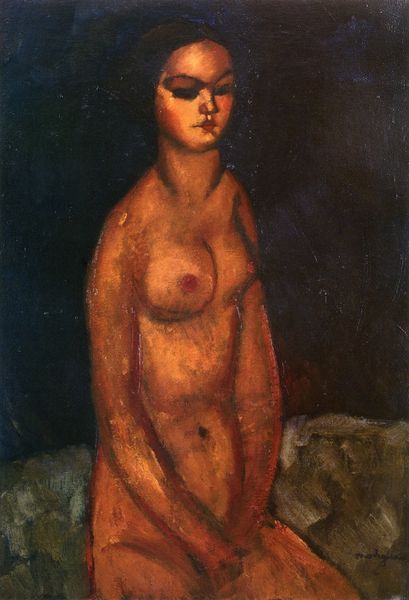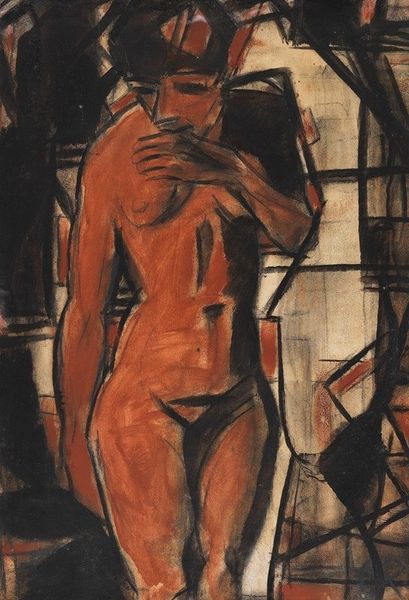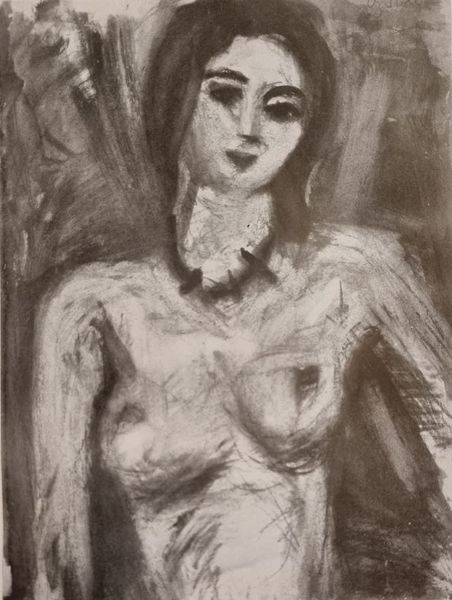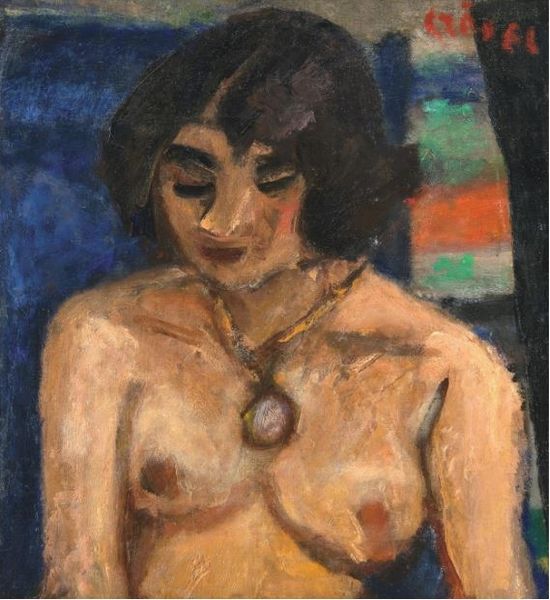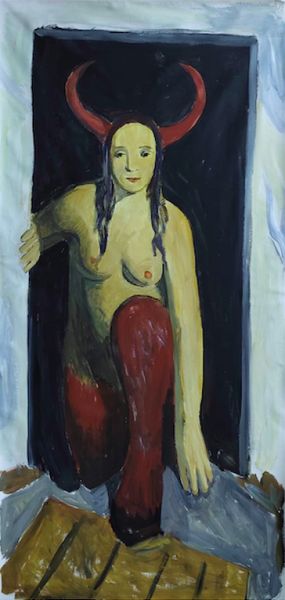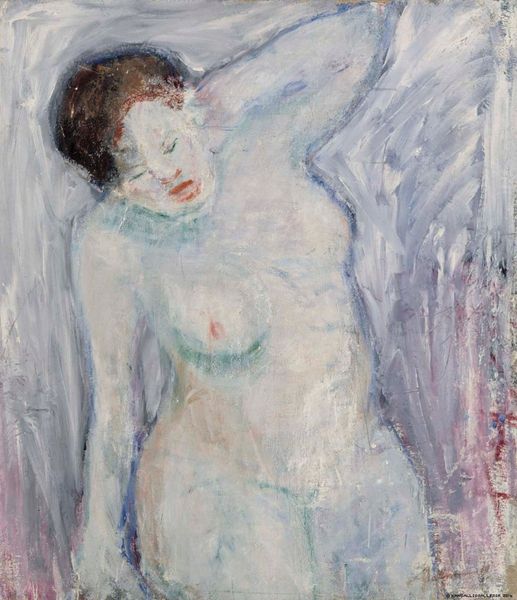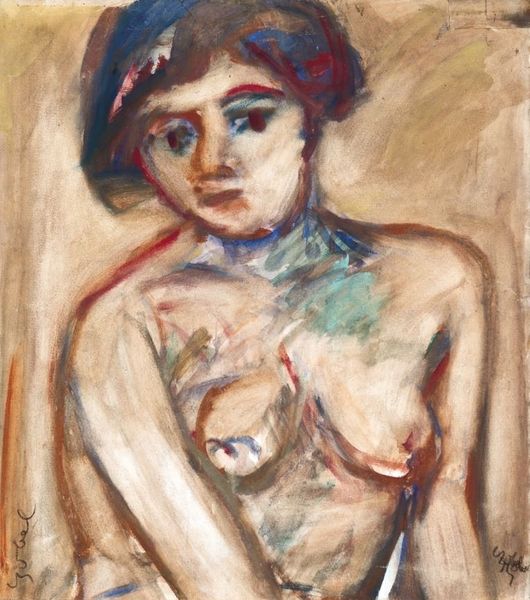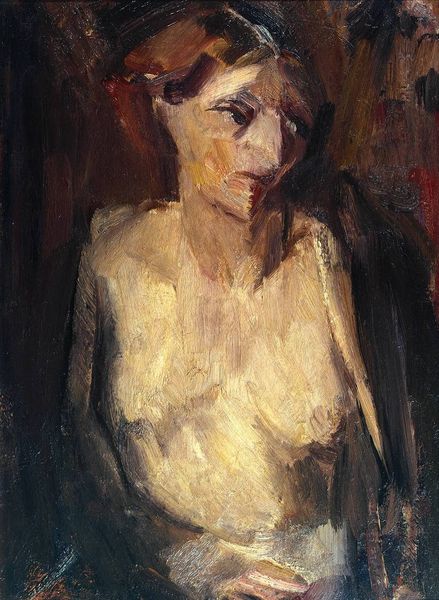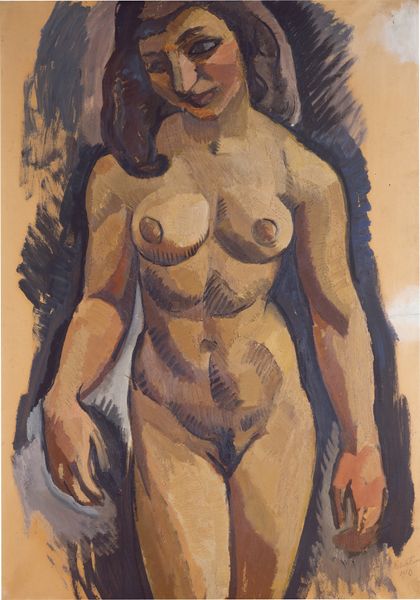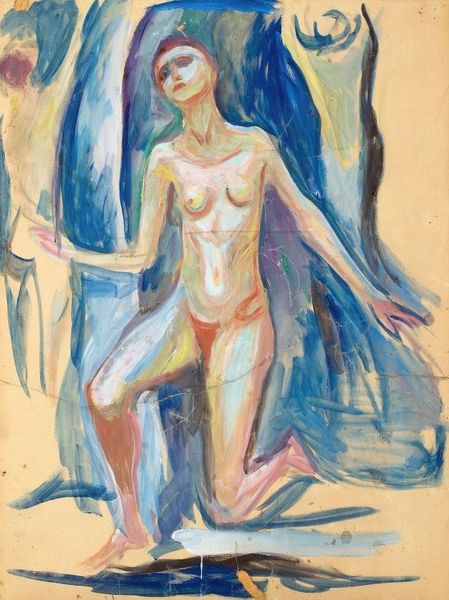
oil-paint
#
oil-paint
#
charcoal drawing
#
figuration
#
charcoal art
#
oil painting
#
expressionism
Copyright: Bela Czobel,Fair Use
Editor: So, this is Bela Czobel’s "Muse," painted in 1930 with oil paint. It's striking how the figure emerges from such a dark background; almost feels like she's revealing herself. What formal elements jump out to you? Curator: Immediately, the handling of color strikes me. Note the limited palette; Czobel primarily uses muted browns and blacks. Observe how these hues create a sense of depth through tonal variations rather than relying on vibrant contrasts. Do you see how this restricted color range impacts the emotional tone of the painting? Editor: Yes, it feels very grounded, less idealized and maybe more raw because of those colors, somehow. It also keeps me very focused on the figure's form and brushstrokes, but it seems like the impasto is quite subtle. Is this typical for Czobel? Curator: Consider how the artist's technique functions structurally here, and his other works. It contributes to a palpable tension between surface and depth. Instead of carefully blending, Czobel allows visible brushstrokes to build up texture while the tonal modeling is very gradual. Note that the light source, while seemingly vague, articulates the figure. How would you say the interplay of light defines the composition? Editor: I can see how the light shapes the figure. It gives a sense of sculptural form even in the painterly style, creating volume where it falls, particularly on the chest and face, and emphasizing the expressive brushstrokes, while dark receding strokes convey shadows. Thank you; I now understand much more about its construction. Curator: Absolutely, viewing through such structured elements is key. Appreciating this emphasis allows for an enlightened experience and enables a wider approach to Czobel's unique aesthetic.
Comments
No comments
Be the first to comment and join the conversation on the ultimate creative platform.
